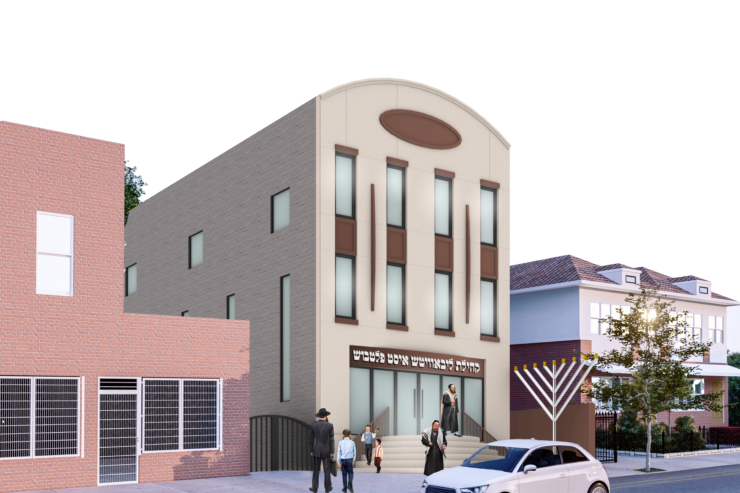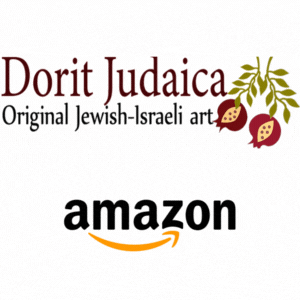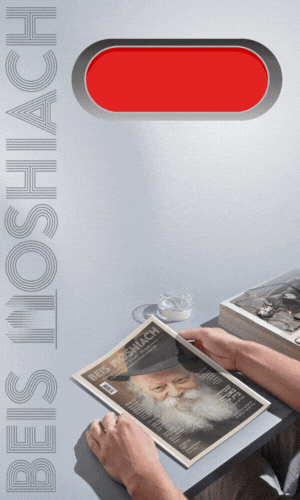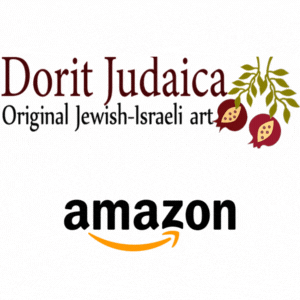Ufaratza: Crown Heights Expands to East Flatbush
They work in Crown Heights, their children attend school in Crown Heights, they shop in Crown Heights, spend most of their day in Crown Heights, and naturally consider 770 the center of their lives, but they live over the unofficial border of Crown Heights. Welcome to the Lubavitch community of East Flatbush • By Beis Moshiach Magazine • Full Article
By Tammy Holtzman, Beis Moshiach
They work in Crown Heights, their children attend school in Crown Heights, they shop in Crown Heights, spend most of their day in Crown Heights, and naturally consider 770 the center of their lives, but they live over the unofficial border of Crown Heights. Welcome to the Lubavitch community of East Flatbush.
In recent weeks, all residents of Crown Heights became well aware of the new community when it announced a fundraising campaign to buy and build a new shul. It was one of the most successful Chabad campaigns in the US as far as how many donors participated, more than 3400.
Fifty years after the Jewish community in East Flatbush fled the influx of blacks into the area, Chabad Chassidim are building up a Chassidishe community there.
A FAMILY BECAME A COMMUNITY; A COMMUNITY WHICH IS A FAMILY
The story of the new community begins to a large extent with our immediate family and has expanded to a story of a community that has become one big family.
Twenty years ago, my husband, Rabbi Yosef Yitzchok Holtzman (henceforth referred to as R’ Holtzman in this article) began working as rabbi and chaplain at SUNY Downstate Medical Center and University, where he takes care of the needs of all hospitalized Jews, teaches in the university, and is the liaison between the administration and the Jewish community in Crown Heights. SUNY consists of five huge campuses with thousands of students; every second doctor in Brooklyn graduated from SUNY.
SUNY Medical Center is located, on the official map of New York, in the neighborhood of East Flatbush. East Flatbush is the natural continuation of Crown Heights and is a twenty-five minute walk from 770 straight down Kingston Avenue. At the end of the avenue there is a dead end in the form of two medical centers, Kings County and SUNY, which stand face to face.
These hospitals serve as the official border between Crown Heights, which ends there, and East Flatbush which starts there. Up until fifty years ago, East Flatbush was quite Jewish, just like Crown Heights but, like Crown Heights, it was abandoned by frightened residents. On many of the houses you can still signs of the former residents and sometimes even actual mezuzos. Some of them, unfortunately, on the front doors of churches which were previously shuls. In the basements of the churches you can sometimes find a mikva.
When R’ Holtzman began working in the neighborhood, he found himself in a wasteland where the streets were scary and the university provided buses so the staff and students could travel there and back safely. The only Jewish bright-spot was within the dormitory in the medical center where Jewish students studied and arranged their own minyan and brought a Sefer Torah.
Here and there an isolated Jew still lived; here and there, a Jew worked in a gas station or store. R’ Holtzman, who wanted to do the Rebbe’s shlichus in the area, would visit each one with tefillin.
Sometimes, calls for help which required the chaplain’s presence at the hospital in the middle of the night or on Shabbos would come in. R’ Holtzman would join the Hatzalah ambulance that brought the patient to the hospital because to the danger of going there alone at night. Sometimes, the dedicated Dr. Feldman a’h, would take the patient himself in his car and pick up the rabbi on the way.
HARDSHIPS AND SOLUTIONS
In the meantime, Crown Heights, a 25-minute walk away but light-years away as far as awareness of it, was growing. Weddings were held, more young couple moved in, babies were born and the Rebbe’s neighborhood grew and spread. As the demand grew, so did the prices. The supply of houses shrank and finding housing in Crown Heights was close to impossible both logistically and financially.
There then began some overflow beyond the borders. Brave Jews moved deeper into gentile neighborhoods, some of them in northern Crown Heights, past Eastern Parkway, and most of them in the area between Crown Heights and the medical center. Even there, the cost of houses began to rise out of all proportion.
Hardships engender solutions and some brave souls looked for housing outside of the official borders. They discovered cheaper housing that was only a short drive away. It turned out to be a solution, somewhat difficult but possible.



Residents of East Flatbush at a Hachnosas Sefer Torah of the Holtzman family. (Photo by Dov Ber Hechtman)
One of the first to look for a home in East Flatbush was R’ Rafi Chayo. He did not expect to find a community in his new place of residence but felt it was fine to move there anyway. His family had grown and they needed space to live. He wrote to the Rebbe and opened to a letter in the Igros Kodesh which was about buying buildings for Anash, that it’s like a deer, the more flesh, the more the skin stretches, so too Anash, when they are in need of material things, the parnassa expands.
The kosher stores were a short drive away and many shuls were available a half an hour’s walk away, and eight years ago he jumped in and bought a house in East Flatbush at a price that he could afford.
When he met R’ Holtzman, the rabbi shared his dream of establishing a permanent Jewish community there. R’ Rafi offered his assistance. “But,” he admits, “I didn’t think it would ever happen. I had made peace with the fact that my family and I were living in a non-Jewish neighborhood. I was grateful to Hashem that I had been able to buy a house in Brooklyn.”
A few other couples did as the Chayos did. R’ Shmuel Zaklikowsky, for example, moved there. R’ Dov Ber Blau bought a house even further from Crown Heights.
R’ Holtzman, who arranged minyanim everyday for the students and staff at the hospital, decided it was a good idea to include the few Jews who had moved into the neighborhood. He figured they wouldn’t feel so far from their home community and would have an opportunity to be involved in mivtzaim.
FROM A MINYAN IN A LIVING ROOM TO THE BASEMENT OF A CLINIC
When there were seven families in the neighborhood, R’ Holtzman decided to arrange a minyan on Shabbos too. Officially, the chaplain did not work on Shabbos but the students attending the university still needed a minyan as did the religious doctors. Out of a general population of 6400 students and staff, over 1500 were Jews.
The Saul family was one of the first families in East Flatbush. When Mrs. Saul heard from R’ Holtzman about his desire to have a minyan on Shabbos, she gladly offered her living room. Every Friday night, the living room turned into a shul. Faculty and students who wanted a minyan were sent there and they were joined by the new Jewish residents of the neighborhood.
It still wasn’t easy to get a minyan. Those who moved to East Flatbush moved there knowing there was no shul and planned on walking every Shabbos to Crown Heights. When you get used to a shul, it becomes a sort of home and you don’t always want to daven somewhere unfamiliar, even if your shul is a long walk away.
R’ Holtzman often made calls before Shabbos to ask people to join the minyan. Sometimes, having no choice, he went from door to door asking people to join. Sometimes he was told no and asked not to try again.
The staff at the medical center were sometimes on vacation or students were busy studying for an exam and refused to leave. Sometimes participants from SUNY were missing and sometimes participants from the neighborhood still wanted to walk to Crown Heights.
There were Shabbosos when they imported people to make the minyan in a sort of tahalucha. R’ Holtzman would enlist some friends and acquaintances, pick them up in his car before Shabbos and they walked back after the davening. They considered it mivtzaim.
The minyan slowly began to take form. Each new resident got a call from R’ Holtzman who welcomed them, told them about the neighborhood, and invited them to join. People hesitantly walked into the Saul living room, ready to give the minyan at least one chance, and when they were warmly welcomed they began to feel comfortable.
From just a minyan for Maariv they expanded to include a minyan for Mincha erev Shabbos. Between Mincha and Maariv, R’ Holtzman taught a sicha.
One day, when the living room was feeling too cramped, R’ Shmuel Zaklikowsky invited them to move the shul to the basement of his house and to turn it into an official shul. The shul moved to the basement erev Rosh Hashana.
The owner of the house was blessed with a wide heart and an exceptionally tall build. In order to enter the low-ceilinged basement of his house, R’ Zaklikowsky had to bend over to a ninety-degree angle and sort of dive in. The tefillos held in the basement included Friday and Yom Tov nights and Mincha on Shabbos. Shacharis on Shabbos was still a dream.



They davened there for a year and the number of families grew to twenty-two. R’ Zaklikowsky saw that they were too many people for the small basement and when the situation became a fire hazard he asked that they find a larger place before the next Rosh Hashana.
Opposite the hospital there is a clinic and R’ Holtzman knew the director. He thought of asking him whether they could use the space on Shabbos and holidays. He went there with Rabbi Avrohom Meir Sherr to talk to the director.
As they stood near the clinic, R’ Sherr noticed a big basement and he thought maybe they could use the basement instead of the clinic. The next day, R’ Holtzman met someone standing outside the building. He introduced himself and the man turned out to be the owner of the building. R’ Holtzman explained their need for a place in which to daven and the owner of the building, a Jew and a mekurav to Chabad agreed to allow them to use the basement for davening.
The place was spacious and well lit. That Rosh Hashana flyers were given out in the hospital which announced that shofar blowing would take place in the shul across the street. Students and staff went there and anyone who wanted to say Yizkor.
All the residents were active partners in setting up the new shul. I also had the privilege of finding on a website a wooden cabinet that had previously been used for a television. With some work in elevating the latent sparks of holiness contained within it turned into the perfect Aron Kodesh.
The basement was set up with shul furniture, the new Aron Kodesh was carefully lowered inside and after hours of work, those involved looked around with satisfaction and real enjoyment. On Yom Tov, they entered with the feeling that it was a home and for the first time there was the feeling that there was a real community here.
From that day on, they had Shacharis too and Rabbi Kramer who teaches in Lubavitch Yeshiva agreed to arrange each time for students to join the minyan. The parents of the students agreed they could go only with an escort and R’ Holtzman would bring them there and back.
After the Yomim Tovim, they asked the owner whether they could rent the basement on a regular basis. He agreed and the rent was reasonable.
STORY OF A FAMILY
The “Nachshons” who moved to East Flatbush broke the fear barrier and from then on there began a steady stream of new residents. Three or four years ago, the neighborhood had barely ten families. Two years ago, there was a new family every month. Last year, a new family moved in on average every week!
Here is the story of the family of R’ Itzik and Chaya Yitzchakov as told by R’ Itzik:
Three years ago, we wanted to buy a house that would meet our growing needs. We lived in Crown Heights and had nearly closed on an apartment for sale. At the last moment we decided it wasn’t for us.
We continued looking and the real estate agent suggested a house for sale in East Flatbush. I went to see the house which was nicely renovated but the distance from Crown Heights scared me off. I was afraid we wouldn’t have guests and wouldn’t be able to host farbrengens and shiurim as we had been used to doing. Who’s going to come here, I asked my wife.
My wife went to see the house and she said, “This is the house we’re going to buy!”
We bought it after asking the Rebbe and opening to a letter in the Igros Kodesh with a bracha for a house. This gave us the confidence to go ahead.
We didn’t even have the money for a down payment but suddenly things began to move quickly. Money came from all sorts of unexpected sources, some of it as an outright gift!
The first Shabbos, we brought guests to sleep over in order to preserve the tradition. The next day, they walked to Crown Heights and discovered, to everyone’s surprise, that it was only a twenty-five-minute walk.
One of my friends pointed out that the address of our new home is 358, the gematriya of Moshiach. Someone else noted the name of the street, E. 45 which is the gematriya of Geula! Since then, I tell whoever comes to my house from Crown Heights: Walk straight until Geula Street and look for number Moshiach.
For the first months I continued walking to shul in Crown Heights where I was used to davening but after repeated invitations from people in the community, I tried the local shul one Shabbos. My children loved it and insisted we go there every Shabbos. I found a warm crowd of smiley people who give everybody a feeling of belonging.
The rest is history. Today I live in a community which is a home. We continue to host farbrengens and big mesibos Shabbos, sometimes with dozens of people, for meals, sleeping and Yomim Tovim. I thank Hashem every day that when He closed the door on one neighborhood, He opened the door to a new one.
FROM DREAM TO REALITY
Four years passed since then and the East Flatbush community now consists of seventy families and the numbers are growing.
People no longer need convincing to come to the minyan; the shul is always buzzing. The community consists mostly of melamdim who work in Crown Heights, Chassidim, talmidei chachamim, lawyers and accountants. A colorful mix of talents. People are careful to keep their differences of opinion to themselves to increase the love and brotherhood.
The gabbai of the shul was first Rabbi Dov Ber Blau who arranged shiurim and worked to preserve the spiritual character of the place. When he decided to give the job over to someone else, Rabbi Mendy Drookman took it on and he runs it quite efficiently. Bookcases were added which are filled every Hei Teves with sefarim that cost thousands of dollars. R’ Drookman is someone to whom sefarim are dear to his heart. Some of the bookcases were donated by R’ Dovid Leib Halon who was happy to help, including with the installation.
I myself got a carpenter who built a proper bima. R’ Zaklikowsky donated a shtender and after I sewed a proper covering for a paroches, he dedicated it l’ilui nishmas his father.
Many children attend shul every Shabbos. Books and toys were bought for them and they also have mesibos Shabbos.
“At Birkas Kohanim this year, when I took my children under my tallis,” said R’ Chayo, “it struck me that there is a new reality here. Out of a non-Jewish neighborhood we now have a lively Jewish community which is growing. All of us work hard to see to it that this be a community that fills all of our Jewish needs, out of love and friendship. On the street, you see Jewish mothers pushing baby carriages, you meet a friend who is also hurrying to shul, and you see that the dream has become a reality!”
***
EXCITEMENT OVER A HACHNOSAS SEFER TORAH
Last summer, my brother-in-law and sister-in-law, R’ Noach and Rivka Holtzman, decided to write a Sefer Torah l’ilui nishmas my father-in-law and mother-in-law, Rabbi and Mrs. Yaakov Tzvi and Chaya Tzipporah Holtzman. They intended on donating it to the shul in East Flatbush. We had the zechus of combining a family simcha with the simcha of the community which has become like family.
The final letters were written in my brother-in-law and sister-in-law’s home on the outskirts of Crown Heights. From there, the procession walked to the shul, about a half an hour walk. Non-Jewish residents curiously watched a scene they had never witnessed before. Some of them danced on their porches, some even came out to join the procession and accompanied us till the shul.
As we approached the border of Crown Heights, we saw a magnificent sight that brought tears to the eyes of all the participants. The community of East Flatbush, men, women, and children were waiting for us in the pouring rain and welcomed the Sefer Torah. More and more people joined us and at the shul there was a festive meal and hakafos.
***
NOTE



This article is only about East Flatbush. However, Crown Heights is spreading out to other neighborhoods too. On the map, central Crown Heights is orange. This is where most Jewish residents live, estimated at nearly 4000 families.
Above it is Northern Crown Heights which is on the other side of Eastern Parkway. About 200 families live there. Below it, in green and blue, is Southern Crown Heights and Kingsbrook which also have about 200 Chabad families.
The area in pink is East Flatbush. On the right you can see the section in yellow where Oholei Torah bought a building for the mesivta and where we will probably see Chabad families soon. Above the area of the mesivta is a large community of about 100 Lubavitcher families in Remsen Village. On the right, above it, marked in brown is historic Brownsville where Lubavitcher Chassidim and many other Jews lived seventy-eighty years ago. Now, it has started to become a place where Jews live again with about 20 Chabad families.
*
The magazine can be obtained in stores around Crown Heights. To purchase a subscription, please go to: bmoshiach.org
470
Join ChabadInfo's News Roundup and alerts for the HOTTEST Chabad news and updates!













































